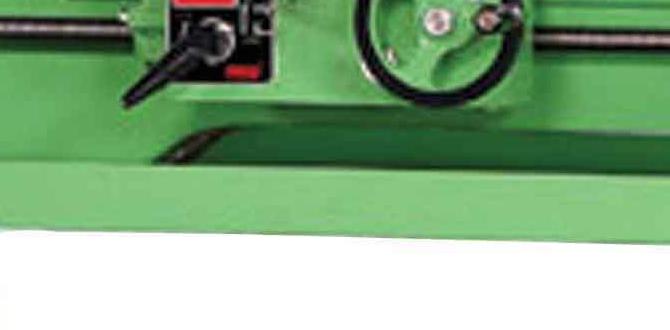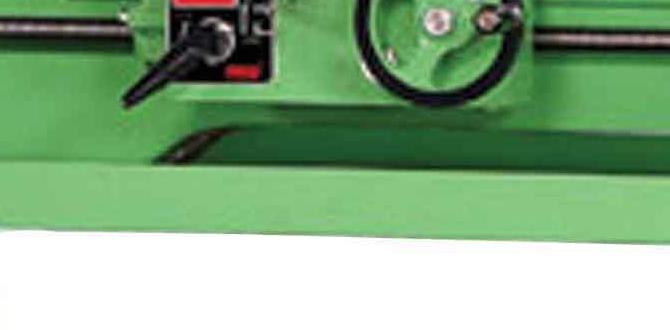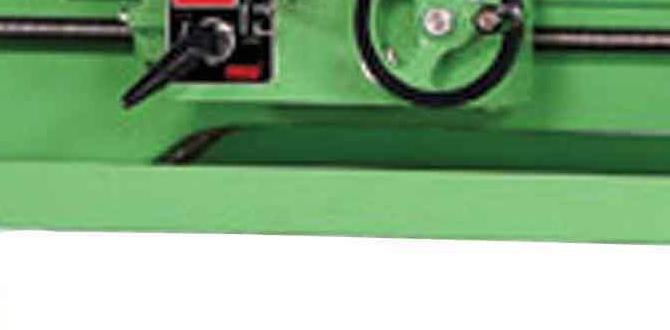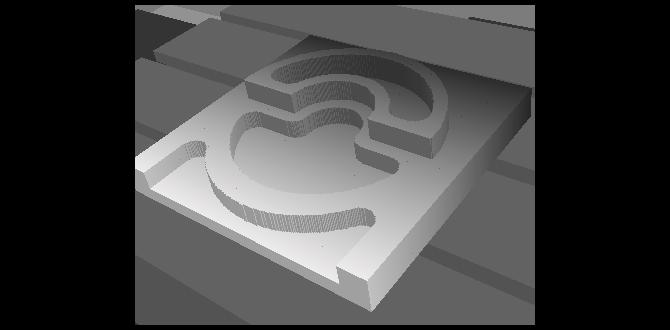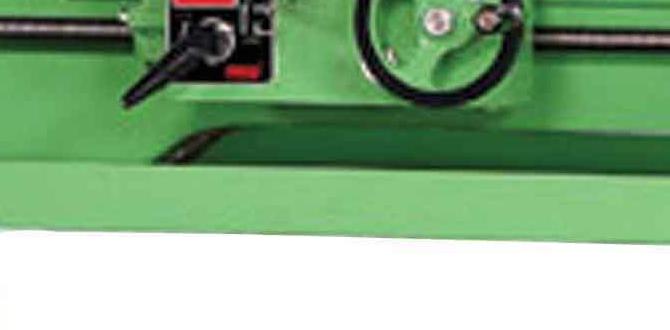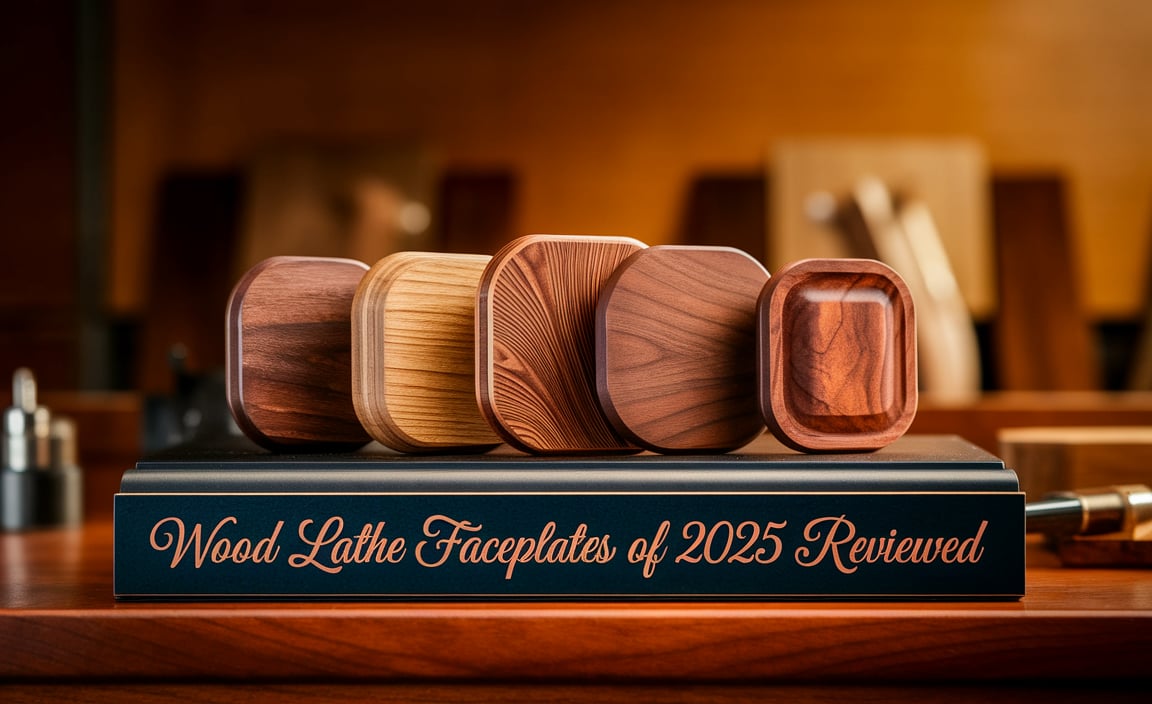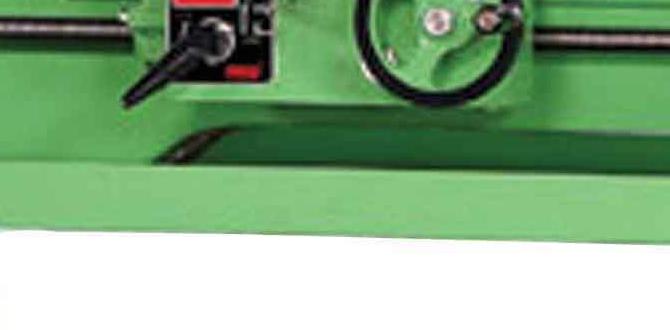The best wood lathe tool sharpening stone offers a consistent, fine grit to bring a razor-sharp edge back to your turning tools quickly and safely, ensuring smooth cuts and preventing frustrating tear-out without complex setups.
Keeping your wood lathe tools sharp is one of the most important things you can do for better turning. A dull chisel doesn’t just make your work council; it can be downright dangerous. When your tools lose their edge, they require more force to cut, increasing the chance of slipping and causing injuries or damaging your workpiece. Plus, a sharp tool glides through wood, leaving a beautiful finish that requires less sanding. But with so many sharpening stones and systems out there, how do you choose the right one to get that perfect edge? Don’t worry, we’ll break down what makes a great sharpening stone for your wood lathe in this easy-to-follow guide.
Why Your Wood Lathe Tools Need a Reliable Sharpening Stone
Think of your wood lathe tools like a chef’s knives. Even the best knives become useless without regular honing and sharpening. The same principle applies to your turning tools. As you shape wood, the edge of your chisels, gouges, and scrapers inevitably dull. This happens due to friction, impact with knots, and the natural wear on hardened steel.
A dull tool forces you to push harder, which can lead to several problems:
- Increased Risk of Injury: A tool that skips or digs in unexpectedly is a serious safety hazard. A sharp tool cuts cleanly with less effort.
- Poor Surface Finish: Dull tools tear wood fibers rather than slicing them, resulting in a rough, fuzzy surface that needs excessive sanding.
- Tool Damage: Forcing a dull tool can also put undue stress on the tool handle and your hands, potentially leading to breakage.
- Frustration: Let’s be honest, wrestling with a dull tool is not enjoyable. Sharp tools make turning a pleasure.
Choosing the right sharpening stone is key to easily and effectively restoring that keen edge. It’s not about having the most expensive setup, but the one that best suits your needs and helps you achieve reliable results, time after time. We’ll explore the types of stones and what to look for to make sure you get the most out of your woodturning sessions.
Understanding Wood Lathe Tool Sharpening Stones
Sharpening stones, also known as whetstones, are abrasive surfaces used to grind and hone a cutting edge. For wood lathe tools, the goal is a sharp, durable edge that can handle the demands of turning. There are several types of sharpening stones available, each with its own characteristics:
Oil Stones
Traditionally, oil stones were very popular. They use oil as a lubricant, which helps to float away metal particles and prevent the stone from clogging. They are generally durable and can last a long time. However, they can be slower to cut than some other abrasives and require a specific oil for maintenance.
Water Stones
Water stones are perhaps the most common choice for woodworkers today and are highly recommended for wood lathe tools. They use water as a lubricant. They tend to cut faster than oil stones, especially finer grits are good for achieving a polished, razor-sharp edge. Water stones come in a wide range of grits, from coarse for reshaping to very fine for polishing.
- Pros: Fast material removal, excellent for achieving fine edges, relatively easy to clean.
- Cons: Can be softer and wear faster than other stones, require soaking before use, can be fragile if dropped.
Diamond Stones
Diamond stones feature a surface embedded with diamond particles, the hardest known substance. They cut very aggressively and can sharpen almost any type of steel, including carbide. They don’t require soaking and can be used dry or with water/honing fluid. They are extremely durable and will not dish or wear down over time like other stones.
- Pros: Extremely durable, fast cutting, works on all steels, requires no soaking.
- Cons: Can be more expensive initially, very aggressive cutting might require more care on delicate tools, can leave a slightly rougher finish compared to the finest water stones unless very fine grits are used.
Ceramic Stones
Ceramic stones are made from very hard ceramic materials. They are durable and can provide a fine edge. Like diamond stones, they are good for sharpening hard steels and don’t require soaking. They offer a good balance of cutting speed and edge refinement.
- Pros: Durable, good for hard steels, maintain a flat surface.
- Cons: Can be more expensive, may require a lubricant.
What to Look for in the “Best” Wood Lathe Tool Sharpening Stone
When you’re looking for the best wood lathe tool sharpening stone, several factors come into play. It’s not just about picking one up; it’s about understanding what makes it effective for bringing your turning tools back to life. Here’s what Daniel Bates, a veteran machinist and tool enthusiast, always considers:
1. Grit Size: The Key to the Edge
Grit refers to the coarseness of the abrasive particles on the stone. For wood lathe tools, you’ll typically want a combination of grits to handle different sharpening tasks:
- Coarse Grit (e.g., 100-400): Used for repairing significant damage, reshaping a dulled edge, or when you need to remove a lot of metal quickly. Not ideal for everyday sharpening as it can remove too much material and leave a rougher edge.
- Medium Grit (e.g., 600-1000): This is your everyday workhorse. It effectively sharpens without removing excessive steel and prepares the edge for finer honing.
- Fine Grit (e.g., 1000-4000): Used to refine the edge left by a medium grit stone. It removes any microscopic burrs and begins to polish the bevel.
- Very Fine/Polishing Grit (e.g., 6000+): This is for that final mirror polish. A highly polished edge cuts cleaner and lasts longer. For woodturning, this level of polish is often desired for the smoothest cuts.
A good sharpening system will often involve at least two or three stones, covering a medium, fine, and perhaps polishing grit. Some stones are combination stones, featuring two different grits on opposing sides. These are excellent for beginners and space-saving in a workshop.
2. Stone Type: Water vs. Diamond
For most wood turners, water stones and diamond stones are the top contenders.
- Water Stones: They offer an excellent balance of speed and the ability to achieve a highly polished edge. They are a favorite among many woodworkers for a reason. Just remember they need to be soaked before use and can wear down over time, requiring flattening.
- Diamond Stones: They are incredibly durable and fast-cutting. They don’t dish out, so they stay flat. They are a great investment if you have a lot of tools to sharpen or work with very hard steels. While excellent, the very finest diamond grits might not produce the same mirror polish feel as the highest grit water stones without additional stropping.
3. Flatness:** A Flat Stone is a Smart Stone
A crucial aspect of any sharpening stone is its ability to remain flat. If your stone develops a hollow in the center (known as “dishing”), it will be impossible to sharpen your tool accurately and maintain consistent bevel angles. Many water stones will need to be flattened periodically using a flattening stone or silicon carbide sandpaper on a flat surface like glass or granite. Diamond stones, being extremely hard, tend to stay flat much longer.
For this reason, many beginners find diamond stones to be more “low maintenance” overall, as flattening is less of a concern. However, if you choose water stones, consider also getting a flattening stone. Reputable sources, like Tooling University’s Sharpening Basics guide, stress the importance of maintaining flatness for effective sharpening.
4. Size and Stability
Consider the size of the stone. Larger stones are generally easier to use as they provide more surface area to work with, especially for larger turning tools like bowl gouges. You’ll also want a stable base for your stone. Many stones come with rubber feet or a base, which prevents them from sliding around on your workbench. If yours doesn’t, a damp cloth or a dedicated non-slip mat underneath can do the trick. Safety first!
5. Ease of Use for Beginners
As Daniel Bates, I always think about making things as straightforward as possible for beginners. This means looking for stones that are forgiving and don’t require complex jigs or techniques. Combination stones (like a 1000/6000 grit) are fantastic because they offer two grits in one and are easy to manage. Diamond stones are also very beginner-friendly due to their durability and low maintenance.
Proven Best Wood Lathe Tool Sharpening Stone Options
Based on these criteria, there are several types of sharpening stones that consistently perform well for wood lathe users. While “best” is subjective and depends on your specific needs and budget, these are highly regarded:
1. King Water Stones (Combination 1000/6000 Grit)
These are a staple in many woodturners’ shops and for good reason. The 1000 grit side is excellent for general sharpening, quickly restoring a good working edge. The 6000 grit side is where the magic happens, bringing your tools to a mirror polish that slices through wood like butter. They are relatively affordable, easy to use, and widely available.
- Pros: Excellent value, provides a superb polished edge, good balance of grit sizes for most tasks.
- Cons: Can dish over time and require flattening, soft enough to sharpen quickly and easily.
2. Naniwa Super Stones (Various Grits)
Naniwa makes a range of high-quality water stones that are very popular. Their “Super Stone” line offers excellent performance, with a fast cut rate and a refined feel. They are a step up in quality from many entry-level stones and come in a wide array of grits. If you’re looking for a professional-grade water stone experience, Naniwa is a fantastic choice. Many turners opt for a 1000 grit for general sharpening and a 3000 or 5000 grit for a finer finish, often supplemented by a leather strop.
- Pros: Fast cutting, consistent performance, durable for water stones.
- Cons: Higher price point than basic water stones.
3. DMT Diamond Sharpening Plates (Coarse, Fine, Extra-Fine)
For a low-maintenance, highly durable option, DMT diamond stones are hard to beat. They come in various sizes and grit levels. For woodturning, you might consider a combination of a Fine (around 600 grit) and an Extra-Fine (around 1200 grit) plate. These provide a very sharp and durable edge. Since they don’t dish, they remain flat, making angle consistency easier for beginners. You can also add a Dia-Sharp Double Sided Stone for more options.
- Pros: Extremely durable, stays flat, sharpens very quickly, works on all steels.
- Cons: Higher initial cost, may not achieve the same “slippery” smooth polished edge as the highest grit water stones directly, though they are excellent for creating a base edge ready for stropping.
4. Shapton Glass Stones
These are another type of premium water stone. They are known for their fast cutting speed and for staying remarkably flat. They don’t require soaking, just a splash of water, which makes them convenient. They are a bit harder than many other water stones, meaning they wear down more slowly. Many turners use a 1000 grit for general sharpening and a 5000 or 8000 grit for a hyper-polished edge.
- Pros: Fast cutting, minimal soaking required, very durable for water stones, stays flat.
- Cons: Premium pricing.
Sharpening Stone Systems vs. Individual Stones
For beginners, a complete sharpening system can be the easiest way to get started. These systems often include multiple stones with different grits, a stable base, and sometimes even angle guides. This eliminates the guesswork of choosing individual stones and ensures you have the necessary grits to take a tool from dull to razor-sharp.
However, if you prefer to build your collection gradually, you can start with a good combination stone (like a 1000/6000 water stone or a two-grit diamond plate) and add other grits as needed. Daniel Bates often recommends starting simple and expanding your collection based on your experience and the types of woodturning you do.
How to Use Your Wood Lathe Tool Sharpening Stone: A Step-by-Step Guide
Getting the most out of your sharpening stone involves a simple but consistent process. Here’s a step-by-step approach I’ve used for years to keep my tools performing their best:
Step 1: Prepare Your Workspace and Stone
- Clear your bench: Ensure you have a clean, stable surface free of clutter.
- Water Stones: If you’re using water stones, submerge them in water until they stop bubbling (usually 5-10 minutes, check manufacturer’s instructions). Keep a shallow dish of water nearby to wet the stone during sharpening.
- Diamond Stones: These can be used dry or with a light mist of water or a specialized honing fluid.
- Stable Base: Make sure your stone is on a non-slip surface. A damp paper towel underneath can work wonders.
Step 2: Sharpen the Bevel
This is where you reshape and hone the cutting edge.
- Gouges (e.g., bowl gouges, spindle gouges):
- Hold the gouge with the flute facing up or at an angle, so the bevel rests flat on the stone.
- Start with your primary bevel. Find the correct angle by touching the bevel to the stone and rocking the tool until the bevel makes full contact.
- Move the gouge in a sweeping motion across the stone, following the curve of the bevel. Use gentle, consistent pressure. Imagine you’re trying to remove a thin layer of metal.
- Sharpen one side of the bevel, then flip the tool and sharpen the other side until you feel a small burr forming on the opposite (unsharpened) edge.
- Skew Chisels:
- Rest the flat back of the skew on the stone.
- Angle the tool so the bevel you want to sharpen rests flat on the stone. Maintain the skew’s original bevel angle.
- Move the chisel back and forth in a slight circular or sweeping motion, ensuring the entire bevel makes contact.
- Work up and down the length of the bevel.
- Flip and repeat on the other side until a burr forms.
- Scrapers:
- Hold the scraper flat on the stone, then tilt it to match the bevel of the scraper’s cutting edge.
- Move it back and forth to hone the edge.
- For creating a burr on a scraper, a specialized sharpening method or a diamond file is often used, but basic honing can be done on a flat stone.
Important: Always move the tool across the stone, not the stone under the tool. Maintain a consistent angle throughout the sharpening process. You’re trying to create a tiny burr along the opposite edge of the bevel. This burr indicates that you’ve ground away the dull material and are ready for the next step.
Step 3: Refine the Edge (Honing)
Once you’ve established an edge with your medium grit stone and felt a burr, it’s time to refine it.
- Switch to your finer grit stone.
- Repeat the sharpening process from Step 2, but use lighter pressure.
- The goal here is to polish the bevel and remove the burr, creating a keen, sharp edge.
- For extremely fine edges, use your highest grit stone (polishing stone) with very light pressure.
Step 4: Remove the Burr and Polish (Optional but Recommended)
While direct sharpening on the stone can remove some burr, a dedicated burr removal step often yields the best results.
- Leather Strop: After sharpening on your finest stone, gently run the bevel over a leather strop charged with honing compound. This polishes the edge and removes any lingering burr. This is highly recommended for a truly razor-sharp edge.
- Flattening the Back (Hollowing): For some tools like gouges, you may want to flatten the inside curve of the flute if it has become irregular. This is often done with specialized small diamond files or honing rods.
Step 5: Test the Edge
A simple test for


